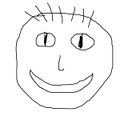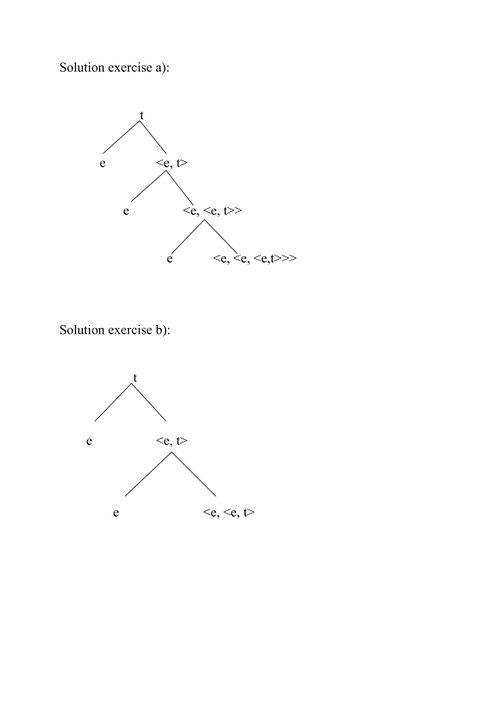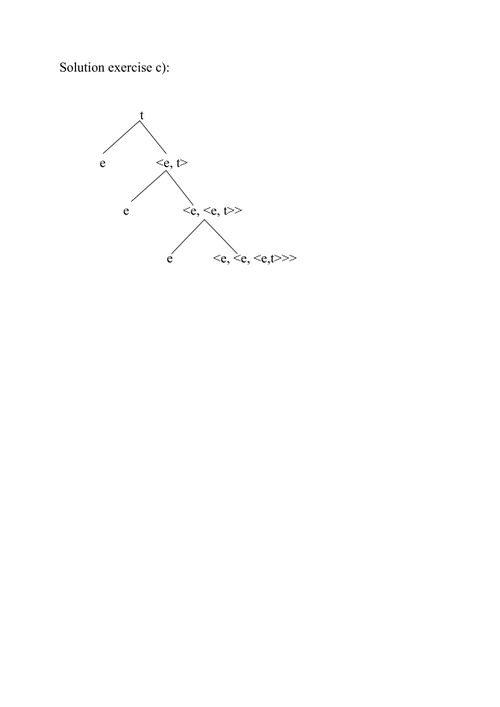NMTS-Group8: Difference between revisions
| (48 intermediate revisions by 6 users not shown) | |||
| Line 4: | Line 4: | ||
= Wikipage of Group 8 = | = Wikipage of Group 8 = | ||
=== Comments by the NMTS-team === | |||
* die Lösungen direkt unter der Übung mit den Baumstrukturen finde ich nicht so richtig sinnvoll | |||
* References: complete bibliogr. references | |||
* Glossary: homonym: references still coming? | |||
* Glossary: Sorts/Types - still incomplete and a distinction between sorts and types missing -> In the Basic Glossary the entry is only listed as "Types" (which makes sense), I didn't find the Sorts/Types link from the Group page in the Basic Glossary. | |||
== Overview == | == Overview == | ||
=== Members === | === Members === | ||
<!-- List the members of your group here --> | |||
* [[User:IngoM| Ingo Müller]] | * [[User:IngoM| Ingo Müller]] | ||
* [[User:Moonhwa9113| Moonhwa Lindemann ]] | * [[User:Moonhwa9113| Moonhwa Lindemann ]] | ||
* [[User:BorisL| Boris Lehn]] | * [[User:BorisL| Boris Lehn]] | ||
* [[User:FlorianB| Florian Bast ]] | * [[User:FlorianB| Florian Bast ]] | ||
* [[User:Hilâl| Hilâl Ünal]] | |||
=== Short description of the topic === | === Short description of the topic === | ||
<!-- Give a short description of your topic--> | <!-- Give a short description of your topic--> | ||
Sorts: | |||
In semantics, there are different sorts of entities. You distinguish between entities which represent a single person or object and entities that represent a group of persons/objects. Additionally, you differentiate between concrete and abstract entities. A concrete entity refers to a specific object, e.g. a particular being (which usually has a name); on the other hand, an abstract entity refers to a non-specific object. | |||
'''Example:''' | |||
The sentence ''The dodo is extinct'' refers to the entire species (of the dodo) and "the dodo" is therefore an abstract entity, i.e. a ''kind''.<br> | |||
On the contrary, the sentence ''My dodo is extinct (or rather, dead)'', obviously neglecting the fact that dodos in general do not exist anymore, refers to a specific dodo, which thus is a concrete entity, i.e. an ''object''. | |||
The same goes for events. An event can be either concrete or abstract. | |||
Types: | |||
In logic and semantics a concept of type is often used to distinguish different | |||
kinds of expression (and of semantic value). These types are used as syntactic | |||
categories for the expressions in the semantic representation language. Each type | |||
will correspond to a certain set of possible denotations. <br> | |||
The (minimal) set of basic types is {e, t}: <br> | |||
– e (for entity) is the type of individual terms <br> | |||
– t (for truth value) is the type of formulae <br> | |||
All pairs <ϭ, τ> made up of (basic or complex) types ϭ, τ | |||
are types. <ϭ, τ> is the type of functions which map | |||
arguments of type ϭ to values of type τ. <br> | |||
In short: The set of types is the smallest set T such that | |||
e,tєT, and if ϭ,τ єT, then also <ϭ,τ> єT. | |||
== References and links == | == References and links == | ||
=== | Kearns, K. Semantics. Basingstoke: Macmillian. 2000. <br /> | ||
Lohnstein, H. Formale Semantik und natürliche Sprache. Berlin: de Gruyter. 2011. | |||
=== Links === | |||
[http://www.ucl.ac.uk/english-usage/projects/noun-phrase/report.htm The English Noun Phrase: an empirical study] <br /> | [http://www.ucl.ac.uk/english-usage/projects/noun-phrase/report.htm The English Noun Phrase: an empirical study] <br /> | ||
[http://stp.ling.uu.se/~matsd/uv/uv05/ads1/ho2.pdf UPPSALA UNIVERSITET - Algoritmer för datorlingvistisk semantik I] <br /> | [http://stp.ling.uu.se/~matsd/uv/uv05/ads1/ho2.pdf UPPSALA UNIVERSITET - Algoritmer för datorlingvistisk semantik I] <br /> | ||
[http://www.cs.rhul.ac.uk/~zhaohui/LACL11.pdf Zhaohui Luo - Word Meanings in Type-Theoretical Semantics] | [http://www.cs.rhul.ac.uk/~zhaohui/LACL11.pdf Zhaohui Luo - Word Meanings in Type-Theoretical Semantics] | ||
= Our e-learning objects = | = Our e-learning objects = | ||
| Line 33: | Line 69: | ||
* in the Glossary: | * in the Glossary: | ||
** [[Glossary:Heteronym]]: the entry for ''Heteronymy'' | |||
** [[Glossary:Homonym]]: the entry for ''Homonymy'' | |||
** [[Glossary:Sorts/Types]]: the entry for ''Sorts/Types'' | ** [[Glossary:Sorts/Types]]: the entry for ''Sorts/Types'' | ||
== Our podcasts == | == Our podcasts == | ||
<!-- List all the podcasts that were created by your group. --> | <!-- List all the podcasts that were created by your group. --> | ||
Sorts: | |||
<embedvideo service="youtube" dimensions="400">http://www.youtube.com/watch?v=EK6tqXdmFwk&feature=youtu.be</embedvideo> | |||
== Our materials for an interactive whiteboard == | == Our materials for an interactive whiteboard == | ||
<!-- List all the files that your group created for the interactive whiteboard. --> | <!-- List all the files that your group created for the interactive whiteboard. --> | ||
[http://user.uni-frankfurt.de/~sailer/nmts-wise1213/MiniPresentation-Sorts.notebook Minipresentation on sorts] | |||
[http://user.uni-frankfurt.de/~sailer/nmts-wise1213/Sorttype.notebook Presentation on types and sorts] | |||
== Our pictures == | == Our pictures == | ||
| Line 50: | Line 96: | ||
<gallery> | <gallery> | ||
File:Bild0705.jpg|IngoM | File:Bild0705.jpg|IngoM | ||
File:Portrait fb.jpg|FlorianB | |||
File:Kayseri.jpg|Hilâl | |||
File: Moonhwa.jpg|Moonhwa | |||
</gallery> | </gallery> | ||
| Line 56: | Line 105: | ||
<!-- Exercise on types of ambiguities. [[Determine_the_type_of_ambiguity|Link to the exercise]] (only one example so far).--> | <!-- Exercise on types of ambiguities. [[Determine_the_type_of_ambiguity|Link to the exercise]] (only one example so far).--> | ||
===Exercise I (Types)=== | |||
Take a look at the following sentences! Which types does the word in ''italics'' require in each sentence? | |||
1) Homer ''slept''. <br /> | |||
2) Homer ''choked'' Bart. <br /> | |||
3) Moe ''sold'' beer to Homer. <br /> | |||
4) Maggie ''hates'' Baby Gerald. | |||
For the solutions, mark the following paragraph (which is seemingly empty) with your mouse. | |||
<span style="color:#FFFFFF"> | |||
1) <e,t> - ''sleep'' is an intransitive verb that does not require an object <br /> | |||
2) <e,<e,t>> - ''choke'' is a transitive verb and requires a direct object <br /> | |||
3) <e,<e,<e,t>>> - ''sell'' is a bi-transitive verb and requires a direct object as well as an indirect object <br /> | |||
4) <e,<e,t>> - ''hate'' is a transitive verb and requires a direct object <br /> | |||
</span> | |||
===Exercise II (Sorts)=== | |||
Decide whether the words marked in ''italics'' in the following sentences refer to concrete/abstract single/group obejcts/events! | |||
'''Example:''' ''The election of Mayor Quimby'' took place on Sunday. | |||
'''Solution:''' ''The election of Mayor Quimby'' refers to a concrete (single) event. | |||
1) ''Mr. Burns'' likes his nuclear power plant. <br /> | |||
2) ''The Springfield Elementary students'' met at the gymnasium. <br /> | |||
3) ''Nuclear meltdowns'' happen a lot in Springfield. <br /> | |||
4) ''The three-eyed fish'' could be extinct soon. | |||
For the solutions, mark the following paragraph (which is seemingly empty) with your mouse. | |||
<span style="color:#FFFFFF"> | |||
1) ''Mr. Burns'' refers to a concrete single object, i.e. an individual. <br /> | |||
2) ''The Springfield Elementary students'' refers to a concrete group object, i.e. a group of individuals. <br /> | |||
3) ''Nuclear meltdowns'' refers to an abstract group event. <br /> | |||
4) ''The three-eyed fish'' refers to an abstract group object, i.e. a kind. | |||
</span> | |||
===Exercise III (Types)=== | |||
a) '''Draw a hierarchical tree of the predicate give’, which is of the type''' <e,<e,<e,t>>>: <br /> | |||
b) '''Draw a hierarchical tree of the predicate kiss’, which is of the type''' <e,<e,t>>: <br /> | |||
c) '''Draw a hierarchical tree of the predicate offer’, which is of the type''' <e,<e,<e,t>>>: <br /> | |||
The solutions are displayed below. | |||
[[File:xyz.jpg|500px]] [[File:bla.jpg|500px]] | |||
Latest revision as of 17:57, 3 April 2016
Warning:
The material on this page has been created as part of a seminar. It is still heavily under construction and we do not guarantee its correctness. If you have comments on this page or suggestions for improvement, please contact Manfred Sailer.
This note will be removed once the page has been carefully checked and integrated into the main part of this wiki.
(Back to the group overview)
Wikipage of Group 8
Comments by the NMTS-team
- die Lösungen direkt unter der Übung mit den Baumstrukturen finde ich nicht so richtig sinnvoll
- References: complete bibliogr. references
- Glossary: homonym: references still coming?
- Glossary: Sorts/Types - still incomplete and a distinction between sorts and types missing -> In the Basic Glossary the entry is only listed as "Types" (which makes sense), I didn't find the Sorts/Types link from the Group page in the Basic Glossary.
Overview
Members
Short description of the topic
Sorts:
In semantics, there are different sorts of entities. You distinguish between entities which represent a single person or object and entities that represent a group of persons/objects. Additionally, you differentiate between concrete and abstract entities. A concrete entity refers to a specific object, e.g. a particular being (which usually has a name); on the other hand, an abstract entity refers to a non-specific object.
Example:
The sentence The dodo is extinct refers to the entire species (of the dodo) and "the dodo" is therefore an abstract entity, i.e. a kind.
On the contrary, the sentence My dodo is extinct (or rather, dead), obviously neglecting the fact that dodos in general do not exist anymore, refers to a specific dodo, which thus is a concrete entity, i.e. an object.
The same goes for events. An event can be either concrete or abstract.
Types:
In logic and semantics a concept of type is often used to distinguish different
kinds of expression (and of semantic value). These types are used as syntactic
categories for the expressions in the semantic representation language. Each type
will correspond to a certain set of possible denotations.
The (minimal) set of basic types is {e, t}:
– e (for entity) is the type of individual terms
– t (for truth value) is the type of formulae
All pairs <ϭ, τ> made up of (basic or complex) types ϭ, τ
are types. <ϭ, τ> is the type of functions which map
arguments of type ϭ to values of type τ.
In short: The set of types is the smallest set T such that
e,tєT, and if ϭ,τ єT, then also <ϭ,τ> єT.
References and links
Kearns, K. Semantics. Basingstoke: Macmillian. 2000.
Lohnstein, H. Formale Semantik und natürliche Sprache. Berlin: de Gruyter. 2011.
Links
The English Noun Phrase: an empirical study
UPPSALA UNIVERSITET - Algoritmer för datorlingvistisk semantik I
Zhaohui Luo - Word Meanings in Type-Theoretical Semantics
Our e-learning objects
Our wiki pages
- in the Glossary:
- Glossary:Heteronym: the entry for Heteronymy
- Glossary:Homonym: the entry for Homonymy
- Glossary:Sorts/Types: the entry for Sorts/Types
Our podcasts
Sorts:
Our materials for an interactive whiteboard
Presentation on types and sorts
Our pictures
Our exercises
Exercise I (Types)
Take a look at the following sentences! Which types does the word in italics require in each sentence?
1) Homer slept.
2) Homer choked Bart.
3) Moe sold beer to Homer.
4) Maggie hates Baby Gerald.
For the solutions, mark the following paragraph (which is seemingly empty) with your mouse.
1) <e,t> - sleep is an intransitive verb that does not require an object
2) <e,<e,t>> - choke is a transitive verb and requires a direct object
3) <e,<e,<e,t>>> - sell is a bi-transitive verb and requires a direct object as well as an indirect object
4) <e,<e,t>> - hate is a transitive verb and requires a direct object
Exercise II (Sorts)
Decide whether the words marked in italics in the following sentences refer to concrete/abstract single/group obejcts/events!
Example: The election of Mayor Quimby took place on Sunday.
Solution: The election of Mayor Quimby refers to a concrete (single) event.
1) Mr. Burns likes his nuclear power plant.
2) The Springfield Elementary students met at the gymnasium.
3) Nuclear meltdowns happen a lot in Springfield.
4) The three-eyed fish could be extinct soon.
For the solutions, mark the following paragraph (which is seemingly empty) with your mouse.
1) Mr. Burns refers to a concrete single object, i.e. an individual.
2) The Springfield Elementary students refers to a concrete group object, i.e. a group of individuals.
3) Nuclear meltdowns refers to an abstract group event.
4) The three-eyed fish refers to an abstract group object, i.e. a kind.
Exercise III (Types)
a) Draw a hierarchical tree of the predicate give’, which is of the type <e,<e,<e,t>>>:
b) Draw a hierarchical tree of the predicate kiss’, which is of the type <e,<e,t>>:
c) Draw a hierarchical tree of the predicate offer’, which is of the type <e,<e,<e,t>>>:
The solutions are displayed below.





